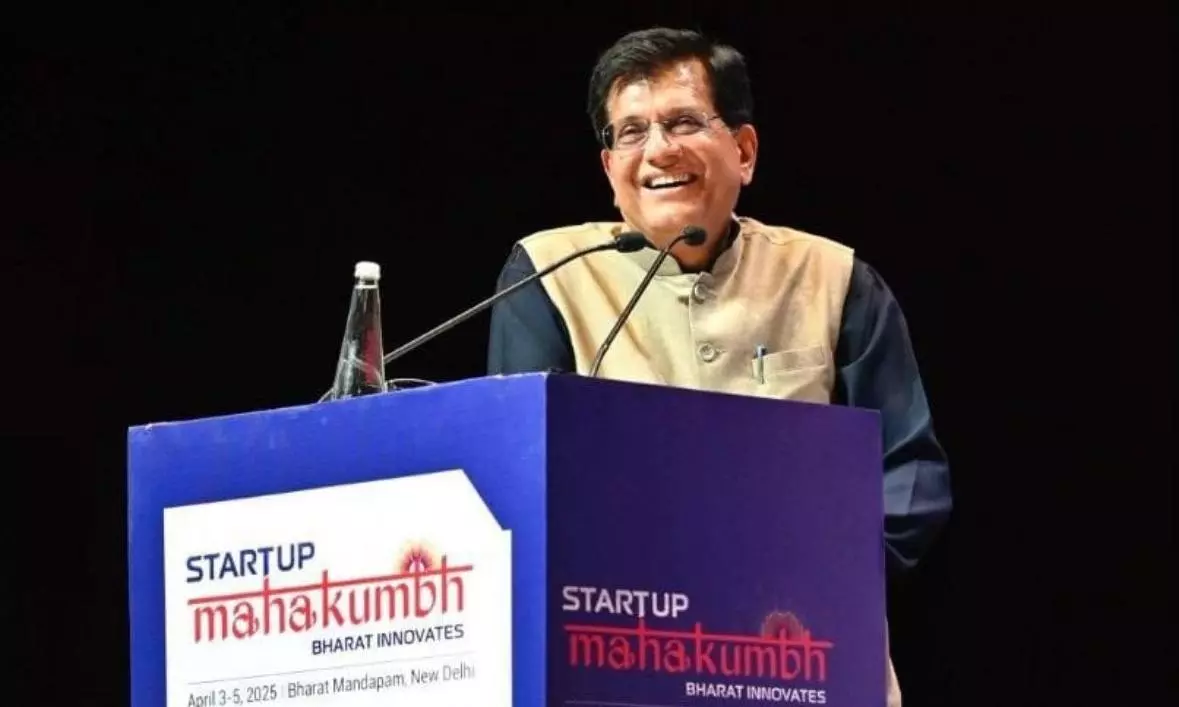
- Home
- India
- World
- Premium
- THE FEDERAL SPECIAL
- Analysis
- States
- Perspective
- Videos
- Sports
- Education
- Entertainment
- Elections
- Features
- Health
- Business
- Series
- In memoriam: Sheikh Mujibur Rahman
- Bishnoi's Men
- NEET TANGLE
- Economy Series
- Earth Day
- Kashmir’s Frozen Turbulence
- India@75
- The legend of Ramjanmabhoomi
- Liberalisation@30
- How to tame a dragon
- Celebrating biodiversity
- Farm Matters
- 50 days of solitude
- Bringing Migrants Home
- Budget 2020
- Jharkhand Votes
- The Federal Investigates
- The Federal Impact
- Vanishing Sand
- Gandhi @ 150
- Andhra Today
- Field report
- Operation Gulmarg
- Pandemic @1 Mn in India
- The Federal Year-End
- The Zero Year
- Science
- Brand studio
- Newsletter
- Elections 2024
- Events
- Home
- IndiaIndia
- World
- Analysis
- StatesStates
- PerspectivePerspective
- VideosVideos
- Sports
- Education
- Entertainment
- ElectionsElections
- Features
- Health
- BusinessBusiness
- Premium
- Loading...
Premium - Events

India's impressive herd of Unicorns has come up beating risk aversion, governance deficit, funding paucity, learning hierarchies and debilitating caste system
Minister for Commerce and Industry Piyush Goyal recently went blue in the face, with passionate disdain for Indian startups that focus on food delivery and gourmet ice cream, instead of innovating hard tech to meet strategic challenges in semiconductors and artificial intelligence, as Chinese startups have.
Startup and venture fund champions responded, faces red with righteous indignation, demanding to know how Goyal could sneer at the value and millions of jobs created by consumer-tech startups, and, further, how much funding the minister and the government have made available for risk-taking in hard-tech areas.
Government vs startups
Roses are red, violets are blue. At first blush, some things might look very disparate, like Goyal and Mohandas Pai, who responded to the minister, with little in common.
But often, the missing link is a matter of perspective. Roses and violets are both flowers. Blue and red are both chunks on the electromagnetic spectrum that form colours and combine together to produce white light.
The minister is right to expect India's talented youngsters to contribute to finding solutions to the nation's strategic challenges. Venture capitalist Pai is right to point out that the government has done precious little to address the funding famine Indian startups experience, compared to their counterparts in China or the United States.
Also read | India’s tariff meltdown before US is beginning of a painful journey
To quote from Pai’s tweet on the subject: “Indian startups got $160 billion from 2014-24, China $845 billion, US $2.3 trillion.”
Missing ecosystem
What reconciles the contrary bits of validity is the missing ecosystem needed to translate latent talent into fruitful research and business, and that goes far beyond funding.
Is it just the startups who tread gingerly when approaching difficult technology? Look at India’s Big Business.
The Birla Group is moving into paint, not semiconductors. Sajjan Jindal is diversifying from steel to airlines and an automobile joint venture with a foreign partner who brings in the technology, and little own investment in technology.
The Adanis are trying to lower the cost of renewable energy and green hydrogen through scale, rather than R&D. Tata’s Big Basket and Reliance Retail are busy biting into startup lunch in quick commerce, not quite humming patriotic ditties while developing foundation models in AI.
Pathetic R&D spend
To be fair, Reliance is doing some serious R&D in telecom, and TCS is backing some startups that have developed indigenous 4G and 5G telecom gear.
But the hard reality is that India Inc contributes a paltry 37 per cent to India’s total outlay on research and development. India’s total R&D spend as a share of GDP is a paltry 0.65 per cent, according to World Bank data. The corresponding figure is 3.46 per cent for the US, 2.43 per cent for China, 4.93 per cent for South Korea, and 5.56 per cent for Israel.
India ranks 39th on the Global Innovation Index compiled by the World Intellectual Property Organization (WIPO). China ranks 11th. The overall index is a composite of seven sub-indices built on pillars that support innovation, and each pillar has its own components.
Also read | Use AI to make Indian youth its wielders rather than its victims
On several of these, India ranks far below its overall index.
Poor showing
On institutional capability, India ranks 54th, and within that, on regulatory environment, India’s rank is 62. Should a startup fix that, too? On education, our rank is 82. The last time we checked, education figures in the Concurrent List, in which the Centre and the states both jointly legislate and govern. The Constitution does not have a Startup List — yet.
On domestic credit to the private sector, India ranks 68th. India’s corporate debt market remains stunted.
But for innovations in non-banking finance by a set of people we have been trained to see as evil — by Mother India for instance — long before fintech companies arrived on the scene, this score would have been even lower.
On another crucial index, scientific and technical papers per billion dollars of GDP, measured in purchasing power parity terms, India ranks 84th. Incidentally, all these parameters offer a reality check to the superiority sought to be conveyed by the statistic that India is the world’s fifth largest economy.
Caste and occupation
But governance deficit and paucity of funding are not the only factors inhibiting Indian startups. Some aspects of India’s history and culture weigh us down, too.
The caste system inhibits academic excellence and entrepreneurship in multiple ways. Learning and the quest for knowledge were institutionally barred for the majority of society for centuries, with such proscription legitimised by theology: Rama had Sambooka, the Shudra, put to death for trying to imitate the Brahmin; Drona punished Ekalavya, who learned archery by observing the martial training of the Kuru princes from the sidelines and had the temerity to excel Arjuna in archery, by making the young hunter boy cut off his thumb.
Also read | AI Vishwaguru? India’s mission is barely taking baby steps
The division of labour, in which some specialise in learning, some in governance, some in trade, crafts and crop husbandry and the rest in performing the manual labour that enables these specialists, was not unique to India. What was unique was the inhibition of social mobility across the occupational divisions through the correlation between caste and occupation and violent punishment of caste transgressions, both sanctified by theology.
Hierarchy in classroom
While the caste system has been abolished formally, the culture continues, and scholastic excellence fails to be a cultural priority for vast sections of India’s population. Caste prejudice haunts India’s institutions of educational excellence, often resulting in campus suicides. The dismal quality of schools, in general, with the elites fleeing to expensive private education, reinforces the traditional exclusivity of learning.
The notion that knowledge is finite and pre-existing, in the Vedas and their commentaries, inhibits research and development. The hierarchy of caste in society replicates in the hierarchy in the classroom: the teacher and the received wisdom he offers cannot be questioned.
The attitude to risk is another contribution of caste culture. While it is entirely legitimate for the trading community to take risks with money, it is considered entirely irresponsible for the rest to take on risk. A safe and steady job is the ideal for the vast majority.
The ability to fail, without having to experience crushing shame and condemnation by those around him, is an essential part of entrepreneurship.
Wanted social cohesion
Despite these limitations, thanks to the sheer numbers in the proportionately slender layers of excellence and entrepreneurship in society, India still produces the third largest herd of Unicorns — startups valued in excess of $1 billion — in the world. That is why India’s innovation rank is 31, at least.
For the full productive potential of society to be unleashed, social cohesion is essential. If India’s religious minorities cannot live in peace and dignity, that vitiates the larger society, and not just the victims of discrimination.
Imagine what would happen if the two-thirds of India’s population, who are below 35 years in age, were to acquire the faculty of critical thought, and an aptitude for risk taking, and could focus on realising their innate potential, instead of worrying about safety and dignity?
It is the job of the government and the political parties to create a society in which this becomes possible. If, instead of glorifying the past, if India were to own up and carry forward its wholesome legacy, while rejecting and removing from contemporary life the harmful parts, India would be unstoppable. Blaming startups does not help.(The Federal seeks to present views and opinions from all sides of the spectrum. The information, ideas or opinions in the article are of the author and do not necessarily reflect the views of The Federal.)


